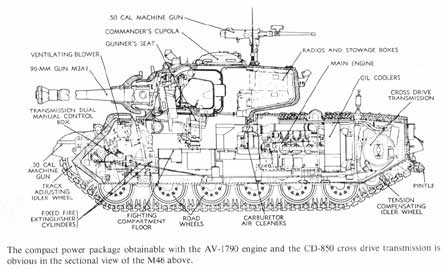 |
||||
 |
||||
Camp Del Mar - Chris Sarno Memoir |
||||
| When the Marine Corps had filled its quota of rifle cadre needed for Korea, it then needed specially-trained
men for its tank and artillery crews. Chris Sarno traded the sound of chirping birds at Tent Camp One for the
sound of the ocean surf at beautiful Camp Del Mar, a neighboring base across the road from Camp Pendleton. He was
one of the privileged few who was notified after his six-week training ordeal at Pendleton that he would be going
to Camp Del Mar for tank school. "I was elated," recalled Sarno. "If the 1st Marine Division in the field in Korea
needed grunts due to heavy grunt KIAs and WIAs at that time, I would have gone directly over with the 9th Draft. I
was very fortunate that the division needed tanker replacements in late July 1951. It was as thin as that. I was
lucky that my enlistment preference was honored by the individual who allowed me to go to tank school. As time
passed during my six months of training, I had always kept my eyes and ears open for an opportunity for any MOS
that would give me better chances of survival than being a ground-pounder. I admired the grunts, but if I could
qualify for a specialized MOS, I wanted that opportunity. I was lucky. I got it and I did it." At Pendleton, Sarno packed his sea bag and climbed aboard a 6x6 truck that took him and the others to Del Mar. He recalled that Del Mar was not exactly glamorous, but it was more civilized than Tent Camp One. "We lived in a World War II-era wooden barracks," he recalled. "We were right on the ocean—100 yards or less from our two-story barracks. It was a restricted area where no civilians were allowed, but it had a slop chute (recreational club) right across the street from the barracks. We could get nice fresh sandwiches, candy, and sodas, and there was a juke box. Something for a break at night. At the tent camp, we just lived in that damned tent and went on to the next problem the next day." In the two-story barracks, the top deck housed all tank men and the bottom half housed artillery men. "I don’t know why they did this instead of putting them all together," Sarno said. "We had more fist fights in the barracks—who was the better Marine, an artillery man or a tanker. Not every day, but there were lots of fist fights over, ‘You guys are pogues and we’re Marines’, stuff like that." The bantering was part of life at Del Mar, which Sarno said was, compared to Pendleton, a "sweetheart." There was music in the chow hall, and the Marines marching up to trucks that carried them to their training areas at Del Mar could hear Nat King Cole singing "Red Sails on the Sunset." Every morning it was the duty of Corporal Lou Storzinger—now an artillery man—to line up some 600-plus Marines in formation, and march them about 200 yards to their designated trucks. "He got a heck of a kick out of marching that number of Marines," recalled Sarno. "He had the voice for cadence." Those assigned to tanks were trucked up to Highway 101, which followed the coastline. "All you saw was beaches," recalled Sarno. "The civilian cars were behind us, and we played hanky panky with the girls, waving to them and playing the role. Every day we did that." And every day they would pull into the tank park, where rows of Sherman tanks awaited them. To the Marines chosen to train on them, it didn’t matter that they were of World War II vintage. "A tank is a tank," Sarno said. It was what he wanted as an MOS. "Tanks. I just liked the sight of tanks," he said. "The firepower. And then the movement, you know. You’re not walking. There are a lot of benefits being with a tank than just walking with a rifle and wearing dungarees. You do have shelter most of the time, and always warm chow. You can warm up C-rations on the mufflers of the tank instead of having cold rations. We also had a huge supply of water on the sides of the tank, and anything else we could steal or put on there. Plus, living by the soles of your feet is pretty rough." Also rough, however, was learning the Sherman tank. "I don’t know how those guys did it in World War II," Sarno admitted. "It’s a tough tank to drive, and just the maintenance on it, getting into the nooks and crannies of it, is difficult compared to the tank that we ended up with in Korea, the M-46." Back in boot camp, Sarno had requested to be assigned to either tanks or artillery, but upon his arrival at Camp Pendleton, he had only one thing on his mind: to be a Marine rifleman. "Tank school was never in my mind at the time," he said. "From the first day at Tent Camp #1, all my mind and energy was focused on learning to be a Marine grunt. It rewarded me to undertake this Spartan training in case I returned to ground pounders if my tank was ever shot out beneath me." In a rustic setting in southern California, where birds chirped in eucalyptus trees and a World War II veteran platoon sergeant sang cadence to the hit song, "Sparrow in the Treetop," Chris Sarno and his fellow Marines prepared themselves for combat. On Korea’s front lines, more than a thousand Marines had already died in service to their country and in opposition to a Communist enemy. |
||||
|
||||
 |
